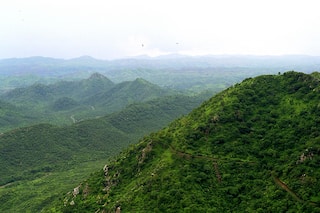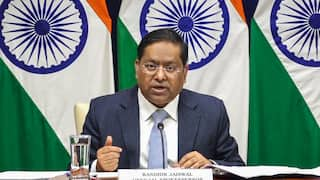Explorer
Protecting the US Open is more exhausting than a five-setter

NEW YORK: In a less-traveled part of the 46-acre Billie Jean King National Tennis Center, an imposing black metal fence offers a reminder of the multiple security worries that come with hosting the U.S. Open. New York Police Department counterterrorism officials insisted that the fence, near a new 8,000-seat grandstand stadium, be reinforced earlier this year with thick strands of cable capable of withstanding a crash from a truck loaded with explosives. "A lot of this stuff is off the radar, but it goes back to what's happening in the world," the event's security director, Michael Rodriguez, said during a flurry of last-minute preparations for Monday's opening matches. Attacks in Europe and mass shootings in the U.S. have created a climate that's added to vigilance over this year's U.S. Open, which already posed daunting security challenges because of its sheer size: 700,000 spectators over two weeks packed into two stadiums, two grandstands and other seating at more than a dozen other tennis courts, all connected by sprawling pedestrian walkways. Officials say they know of no credible threats against a Grand Slam event that happens to end with the men's final on the 15th anniversary of 9/11. But the NYPD, which ordinarily has hundreds of officers in and around the tennis center, plans to increase its presence this year. That's on top of the tournament's roughly 300 private security guards.
 U.S. Open Tennis Tournament Security Director Michael Rodriguez talks with a worker at the tournament's command center, inside the Billie Jean King National Tennis Center in New York. With more than 700,000 fans expected, the U.S. Open tennis tournament poses unique security challenges for officials charged with making the grounds safe. Rodriguez oversees a private security force. (AP)
U.S. Open Tennis Tournament Security Director Michael Rodriguez talks with a worker at the tournament's command center, inside the Billie Jean King National Tennis Center in New York. With more than 700,000 fans expected, the U.S. Open tennis tournament poses unique security challenges for officials charged with making the grounds safe. Rodriguez oversees a private security force. (AP) Layers of protection include installation of temporary closed-circuit surveillance cameras, including some perched atop the 23,771-seat Arthur Ashe Stadium, along with devices to detect chemical, biological or radiation risks. "I've already warned people they're going to see it," Rodriguez said of the extra security. "And they should feel good about seeing it." Rodriguez, a former NYPD detective sergeant and supervisor for the Joint Terrorism Task Force, said he meets twice a day with representatives from the various local and federal law enforcement agencies monitoring the U.S. Open. Sample topic: the difficulties of "drone mitigation." Such widening risks were underscored last year when a small drone crashed into the stands during a match — it turned out a science teacher lost control of it while flying it in a nearby park — and in 2014, when an NYPD intelligence analyst told a gathering of private security directors that an al-Qaida online publication encouraged a car-bomb attack on the tournament. Just outside the gates of the tennis center, the NYPD will keep heavily armed officers trained to respond to terror attacks at the ready. As with other with other events like New Year's Eve in Times Square, plainclothes officers will mix with the crowds. Other defenses include strict screening checkpoints for the throng of spectators. In the past decade, the U.S. Open became among the first sporting events to prohibit backpacks and use airport-style, walk-through metal detectors instead of less-reliable wands to check people for weapons.
 A technician programs a radiation detection device at the entrance to the the Billie Jean King National Tennis Center in New York. The devices, installed by New York City's Department of Environmental Protection, are among many measures being taken to enhance security for the more than 700,000 fans that are expected to attend this year's U.S. Open Tennis Tournament. (AP)
A technician programs a radiation detection device at the entrance to the the Billie Jean King National Tennis Center in New York. The devices, installed by New York City's Department of Environmental Protection, are among many measures being taken to enhance security for the more than 700,000 fans that are expected to attend this year's U.S. Open Tennis Tournament. (AP) The event also has a rigorous inspection system for the more than 1,600 trucks that make deliveries during the event. Drivers are vetted, given a bar code and directed to an inspection point deliberately located a quarter-mile from the tennis center before they can enter the grounds. Last week, United States Tennis Association officials held a meeting at the tennis center with their counterparts from the French Open and other major tournaments to discuss ways to keep spectators safe. "Anything can happen," Rodriguez said. "The question is, 'What are we doing to minimize the risks?" With success at hardening the entrances at big tournaments, security directors have turned their attention to deterring threats to the potential target created by fans congregating in the longer lines to get in, said Richard Bower, owner of Bower Events, Inc., a private security firm that consults on the BNP Paribus Open in Indian Wells, California. That event now deploys SWAT and plainclothes officers, along with police dogs, where the lines form. "Part of it is about making people approaching the event feel safe," Bower said. Sally Kane, 71, of New Rochelle, one of the many fans to turn out last week for free admission qualifying matches, scoffed at the potential risks. "Terrorists don't want to come here," she said. What really bothered her was having to pay to store her metal water bottle — on a list of banned items — outside the center. "I'm very annoyed," Kane said. "I would have felt just as safe with my water bottle."
Follow Sports News on ABP Live for more latest stories and trending topics. Watch breaking news and top headlines online on ABP News LIVE TV
Read more






































